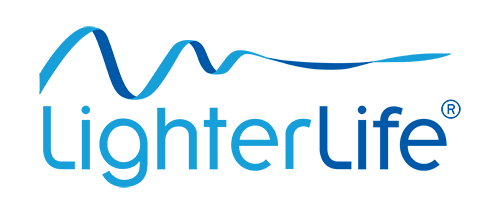How to Start a Very Low Calorie Diet (VLCD) Safely
If you’re thinking about starting a Very Low Calorie Diet (VLCD), it’s important to do it the right way. Reducing your calorie intake to around 600-800 calories per day, the usual range for a VLCD, is well evidenced as an effective weight loss method. And whilst it’s notable change from your usual diet, having a structured, focussed approach when starting this type of plan, will make all the difference to your success. Here’s how to get started safely and effectively.
- Understand How a VLCD Works
A VLCD like TotalFast is designed for people looking to lose weight in a controlled, nutritionally supported way. Instead of regular meals, you’ll follow a carefully tailored plan using specially formulated meal replacement Foodpacks which ensure your body gets the right balance of nutrients each day. These products are scientifically evidenced and manufactured to provide essential fats and proteins, vitamins and minerals, and fibre which meet all your daily requirements and help you stay healthy while keeping calorie intake low.
To get a better idea of what a VLCD involves, learn how a VLCD diet works and its benefits.
- Check If a VLCD Is Right for You
A VLCD is recommended for people with a significant amount of weight to lose, often those with a BMI over 30. However, irrespective of your weight, if you have a health condition like type 2 diabetes or high blood pressure, this type of plan is often recommended in helping manage these conditions and losing weight with this method can bring about notable health improvements. However, it’s always best to complete a medical assessment before starting a VLCD and a reputable provider will help you do that.
- Choose a Trusted VLCD Plan
Remember, not all VLCDs are created equal. Some programmes are backed by research and as well as providing all the essential nutrients your body needs, offer additional support too. So, look for a plan that not only offers a complete dietary component; one that guarantees their products meet all the necessary regulatory and nutritional standards, but which comes with clear instructions and guidelines, and additional support.
- Prepare for the Transition
Switching to a VLCD, or any weight loss plan really, takes some initial adjustment and in the first few days as your body is adapting you must remember to stay hydrated, follow the plan closely, and get enough rest so you can stay focussed on ensuring a smooth a transition into metabolic ketosis.
- Stick to the Plan
VLCDs work best when followed consistently. This means sticking to the recommended meal replacements and avoiding any snacks or extra portions, outside of allowed additional extras which can form part of the plan. Many people find that having a structured, clear programme actually makes it easier to stay on track compared to traditional calorie counting.
- Stay Hydrated and Look After Yourself
Drinking enough water is essential on a VLCD. Aim for at least 2 litres a day to stay hydrated and support your body as it adjusts.

- Think About the Bigger Picture
A VLCD like LighterLife TotalFast isn’t just about quick weight loss—it’s a chance to reset your approach to food, understand your reasons for eating and work towards building better habits. Many people find that following a VLCD in a space where food (other than Foodpacks) is taken out of the equation, helps them successfully rethink their eating patterns. Taking the time to focus on these changes will help maintain results overall.
- Plan for What Happens After the VLCD
Once you’ve almost reached your weight loss goal, you’ll need a plan for transitioning back to regular food. Gradually reintroducing specific foods over a period that works for you, and eventually working towards balanced meals containing a broader range of foods, will help you make sustainable long terms choices to support the progress you’ve made. This phase is just as important as the weight loss itself, ensuring that the hard work pays off in the long run.
Final Thoughts
Starting a VLCD can be a fantastic way to take control of your weight loss journey, but it’s essential to do it properly. Making sure you’re using a trusted plan, staying consistent, and thinking ahead to life after the diet will set you up for long-term success. With the right approach, a VLCD can be a powerful tool to help you achieve your goals and feel your best.




